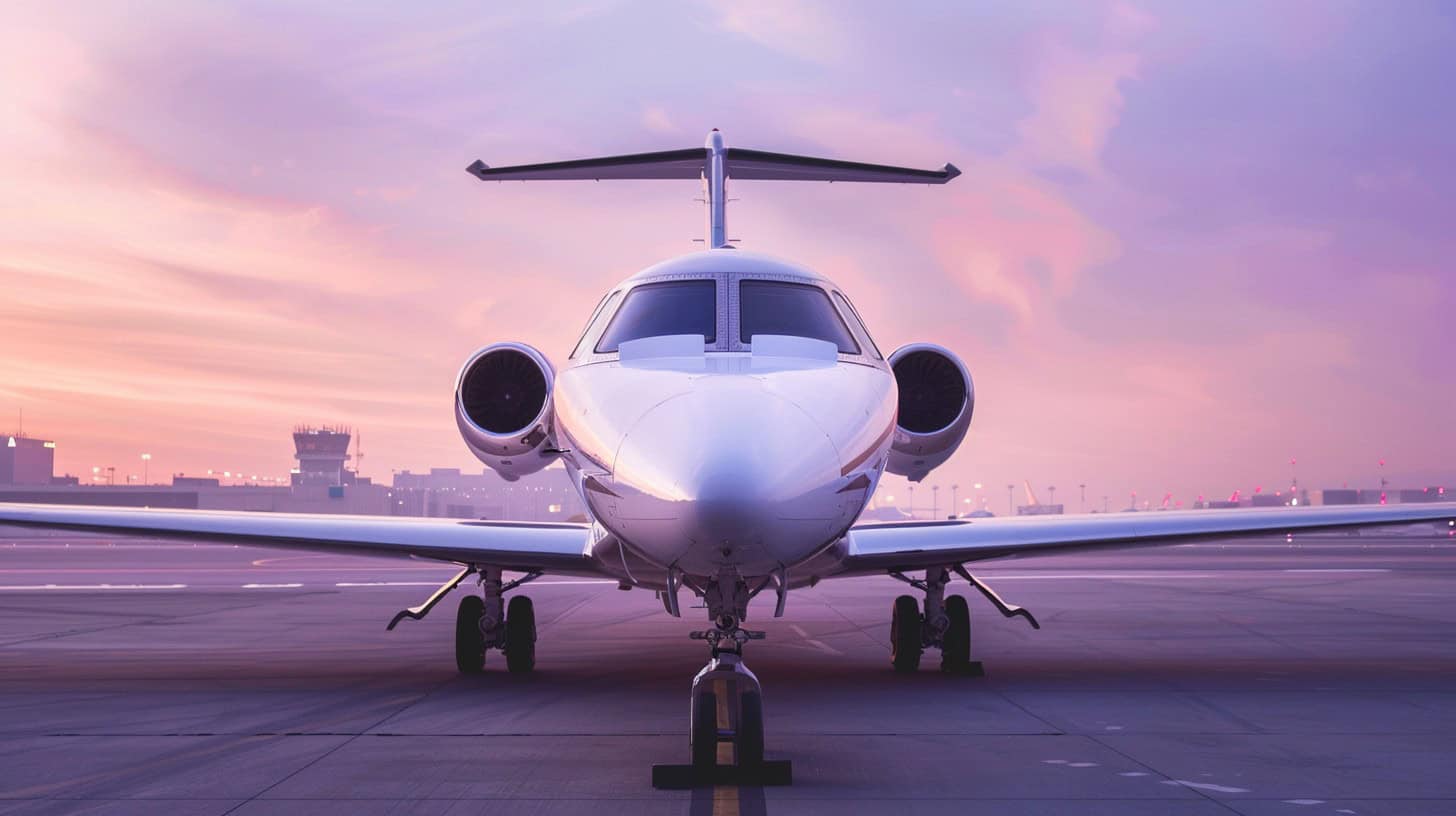Wondering about the sky-high costs of flying private? Charter prices start at $6,000 an hour. This article breaks down all expenses—purchasing, running, and saving on your very own jet.
Stay with us; it’s intriguing.
Key Takeaways
Buying a new private jet costs from $3 million to over $110 million, depending on size and luxury. Used jets are cheaper, but prices vary based on condition and model.
Running a private jet includes fuel, crew salaries, maintenance, and insurance. Fuel can cost around $30,000 for larger jets, with annual upkeep reaching up to $500,000.
Fractional ownership or leasing offers savings by sharing costs. Jet card memberships can lock in flight rates for further budget control.
Extra expenses like customizing your jet’s interior or upgrading tech add more to the overall cost. Insurance premiums also rise with these enhancements.
Saving options include empty-leg flights at reduced rates or opting for smaller jets, which are less costly both in purchase price and operational expenses.
Table of Contents
Initial Costs of Purchasing a Private Jet
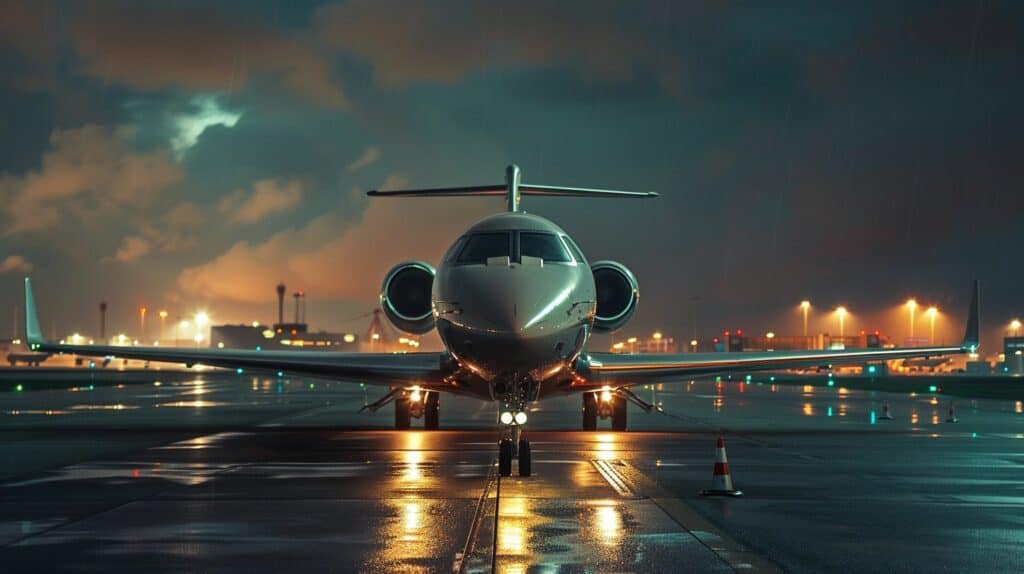
Buying a new private jet starts at millions of dollars. You can save by looking for used ones or opt to hire a private jet charter online instead.
Pricing for New Private Jets
Owning a new private jet sets the bar high in personal and business travel. The cost? It ranges vastly. For a light jet, prices start at around $3 million. Mid-size jets step up the game, coming in at about $9 million. Those seeking the pinnacle of luxury, executive airliners, can expect to shell out more than $110 million. This financial leap brings unparalleled comfort and space.
| Type of Private Jet | Cost Estimate |
|---|---|
| Light Jets | $3 million |
| Mid-Size Jets | $9 million |
| Executive Airliners | More than $110 million |
These figures merely scratch the surface. With full ownership comes the freedom to customize. Interiors can mirror a flying office or a cozy living room. Yet, customization inflates the price. Add in advanced tech, safety features… the cost climbs.
Fuel isn’t cheap, either. Nor are crew salaries, maintenance, or hangar fees. Yet, for many, the convenience, speed, and privacy justify the expense. Flights operate on your schedule, making the world more accessible.
In essence, a new private jet is a substantial investment. It’s not just the purchase price but the ongoing costs that tally up. Wise owners assess these factors carefully, ensuring their flying dreams align with financial reality.
Market Values for Used Private Jets
Market values for used private jets vary. Prices depend on the jet’s condition, age, and hours flown. A used Very Light Jet might cost between $2.5 million and $7 million. Light Jets sell for $3 million to $8.5 million. Midsize Jets go for $4 million to $10 million. Super Midsize Jets range from $7.5 million to $20 million. Large Jets are priced between $25 million and $40 million. Long-range jets fetch $35 million to $70 million. Executive airliners cost $40 million to $100 million.
| Jet Type | Used Market Price Range |
|---|---|
| Very Light Jet | $2.5 million – $7 million |
| Light Jet | $3 million – $8.5 million |
| Midsize Jet | $4 million – $10 million |
| Super Midsize Jet | $7.5 million – $20 million |
| Large Jet | $25 million – $40 million |
| Long-range Jet | $35 million – $70 million |
| Executive Airliner | $40 million – $100 million |
Prices reflect a range. Specific value hinges on detailed jet history and condition. Buyers eye fuel efficiency, technology, and cabin size. Each factor plays a role in final cost. Sellers might adjust prices based on market demand. Buyers should budget for inspections and potential upgrades. Market values for used private jets offer a starting point. Yet, due diligence ensures a wise investment.
Exploring Private Jet Ownership Options

Owning a private jet comes with choices. Full ownership gives you control, fractional ownership saves costs, and charters offer flexibility without the buy-in.
Benefits and Costs of Full Ownership
Owning a private jet outright means paying for everything yourself. Monthly hangar costs run from hundreds to thousands of dollars. Crew expenses may top $200,000 each year. You also cover insurance and fuel for every trip.
Full ownership gives freedom but demands deep pockets.
This option suits those who fly often and want total control over their schedules and jet interiors. You choose when, where, and how you travel. Yet, these benefits come with high costs—management fees, customizations, upgrades, and operational expenses pile up.
Advantages of Fractional Ownership
Fractional ownership lets you start with a small part of an aircraft, like 1/16th share. For example, getting into a Volato HondaJet at $549,000 makes jet ownership more accessible.
You split costs and management tasks, making it less of a burden. This way, you enjoy flying on your schedule without full ownership’s high price.
This option also opens doors to premium private aviation experiences without buying an entire jet. Shareholders get access to luxurious flights as needed. They pay for their share plus ongoing operational expenses—fuel, crew costs, maintenance—which are much lower than owning a jet solo.
It’s smart for those who fly enough to justify the expense but not so much that full ownership makes sense.
Choosing Private Jet Charters
Private jet charters offer a high level of flexibility and convenience for travelers looking to avoid the hassles of commercial flights. Starting at $6,000 an hour for short-range trips, these services include crew costs and can add flight attendants if requested.
This makes chartering an attractive option for those needing quick, efficient travel without the long-term commitment of ownership.
Opting for a charter means you pay only for what you need, making it ideal for business jets users who fly less frequently but still demand luxury and privacy on their terms. With various aircraft from Bombardier Global to Gulfstream G450 available, clients can choose the perfect size and range fitting their travel needs.
Next up: Running Costs of a Private Jet explores how owning impacts your wallet over time.
Running Costs of a Private Jet
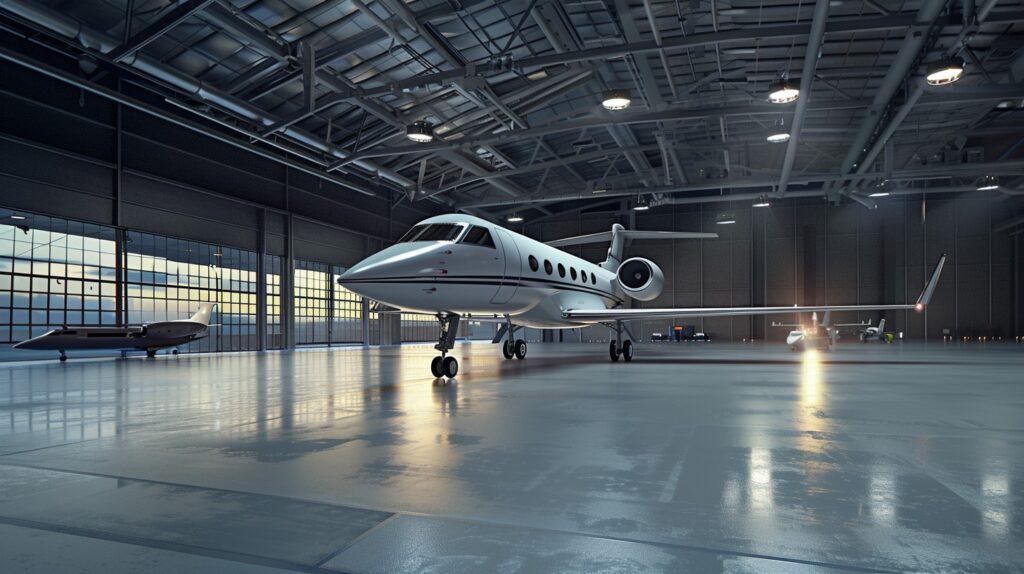
Owning a private jet means paying for more than just the plane. Fuel, crew wages, upkeep, and airport fees add up fast.
Fuel Costs and Operational Expenses
Fuel costs and operational expenses form the backbone of private jet ownership financials. Let’s break it down.
| Expense Category | Details | Cost Estimate |
|---|---|---|
| Fuel Costs | For a large jet | $30,000 |
| Maintenance and Operational Expenses | Annual upkeep, including repairs and check-ups | Up to $500,000 |
| Crew Salaries | Pilots and cabin crew | Varies |
| Landing Fees and Taxes | Varies by airport | Varies |
Fuel costs can eat up a significant part of your budget. For big jets, expect to shell out around $30,000. But, that’s just the beginning. Yearly maintenance and operations can run up to $500,000. This covers everything from regular check-ups to unforeseen repairs. Don’t forget about the crew. Their salaries add another layer of expense. Finally, landing fees and taxes can fluctuate based on your destinations.
In short, owning a private jet comes with its set of financial obligations. Fuel and operational costs stand out as key players. Keep these figures in mind when planning your budget.
Crew Salaries and Maintenance Costs
Moving past fuel costs and operational expenses, we delve into another significant financial aspect of private jet ownership: crew salaries and maintenance costs. These elements are critical for ensuring safety, efficiency, and the luxurious experience expected from private jet travel.
| Expense Category | Details | Estimated Annual Cost |
|---|---|---|
| Crew Salaries | This includes pilots, flight attendants, and any additional personnel required for operation. | Over $200,000 |
| Maintenance Costs | Regular inspections, repairs, and upkeep to meet safety and operational standards. | Varies greatly depending on jet age, model, and usage. |
| Insurance Premiums | Annual coverage for potential damage, liability, and more. | $10,000 |
| Hangar and Storage Fees | Costs for parking and storing the jet when not in use. | Dependent on location and size of hangar space. |
Owners must factor in crew costs, which can exceed $200,000 annually, emphasizing the importance of this expense in the overall budget. Maintenance, another pivotal expense, varies based on the aircraft’s usage and model, ensuring everything from engine performance to cabin aesthetics meets the highest standards. Insurance, critical for risk management, stands at around $10,000 yearly, offering peace of mind against unforeseen incidents. Lastly, hangar fees add to the bill, with costs swaying based on airport location and hangar amenities.
Understanding these expenses aids in forming a comprehensive view of private jet ownership costs, guiding prospective owners in financial planning and decision-making.
Calculating Landing Fees and Taxes
After considering crew salaries and maintenance costs, we delve into landing fees and taxes. These fees can significantly impact the total cost of owning a private jet. Let’s break down the essentials:
| Cost Type | Details | Average Cost |
|---|---|---|
| Landing Fees | Charged per landing at airports | $100–$500 |
| Federal Excise Tax (FET) | Applied on private jet charters | 7.5% |
Landing fees vary widely by airport. Factors include the jet’s weight and the airport’s size. Smaller airports might charge less, helping save costs. The Federal Excise Tax (FET) on private jet charters is a constant 7.5%. Every jet operator must factor this into budget plans. Understanding these fees ensures no surprises in your jet ownership journey.
Extra Financial Factors in Jet Ownership
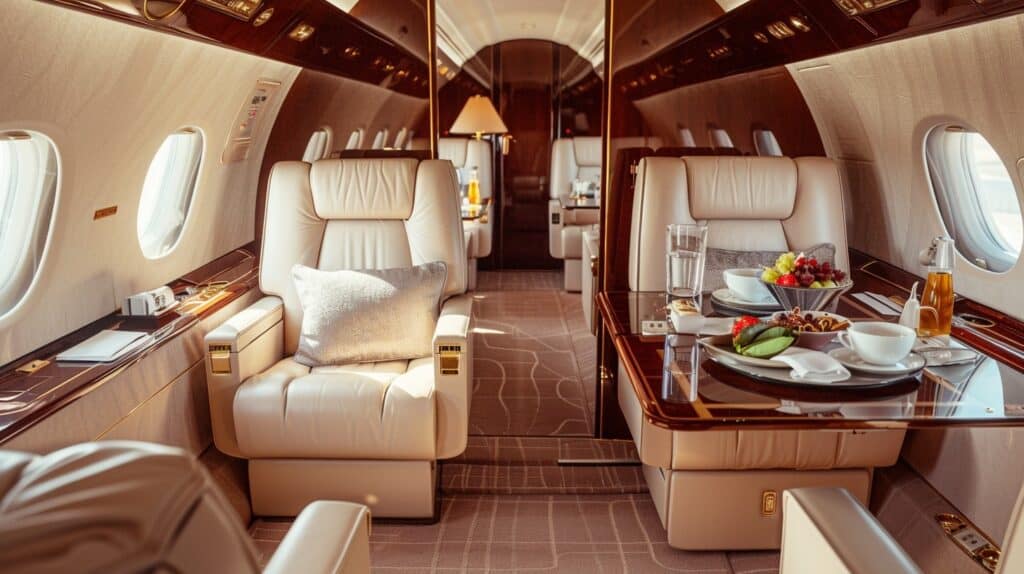
Owning a jet also means paying for customization, coverage costs, and where you keep it. Ready to learn more? Keep reading.
Customization and Upgrades
Customizing a private jet makes travel feel more personal. Owners often upgrade seats, in-flight connectivity, and cabins to match their style. These upgrades can significantly increase the cost of ownership.
For example, adding advanced avionics or a luxury interior might cost hundreds of thousands.
Insurance premiums rise with these enhancements too. Yet, they ensure your jet stands out and meets specific needs. Consider Gulfstream G650ER‘s high-speed internet or Bombardier Global 7500‘s custom leather seats—an initial investment that pays off in comfort and efficiency on every trip.
Upgrading your private jet is like tailoring a suit—it should fit perfectly and reflect your style.
Insurance Premiums for Private Jets
After considering customization and upgrades, it’s crucial to factor in insurance premiums for private jets. Owning a jet comes with the responsibility of ensuring it’s adequately insured, a significant annual expense.
| Insurance Aspect | Details | Annual Cost |
|---|---|---|
| Basic Coverage | Covers damage, loss, and liability | $10,000+ |
| Comprehensive Coverage | Includes basic coverage plus extras like in-flight insurance | Varies based on jet value and usage |
| Factors Influencing Cost | Jet size, age, usage, flight regions | Depends on specifics |
| Ways to Save | Shop around, combine policies, maintain a good safety record | Can significantly reduce premiums |
Insurance costs for private jets start at around $10,000 annually but can rise based on several factors. Jet size, age, and how often you fly influence your premiums. Flying in certain regions might also increase costs. To keep expenses in check, compare insurance offers and consider bundling policies. Maintaining a clean safety record can also lead to savings on these premiums.
Hangar and Storage Fees
Owning a jet comes with the need for hangar space. Monthly costs vary widely, from several hundred to several thousand dollars. This expense depends on the airport’s location and the jet’s size.
| Fee Type | Description | Cost Range |
|---|---|---|
| Hangar Fees | Monthly rental for storing a private jet | $500 – $5,000+ |
| Storage Fees | Outdoor storage as an alternative to hangars | Lesser than hangar fees, but varies |
These costs are just one part of the financial commitment. Fuel, crew salaries, and maintenance also play a significant role in the total expense. Moving on, let’s examine fuel costs and operational expenses next.
Cost-Saving Alternatives for Private Jet Users
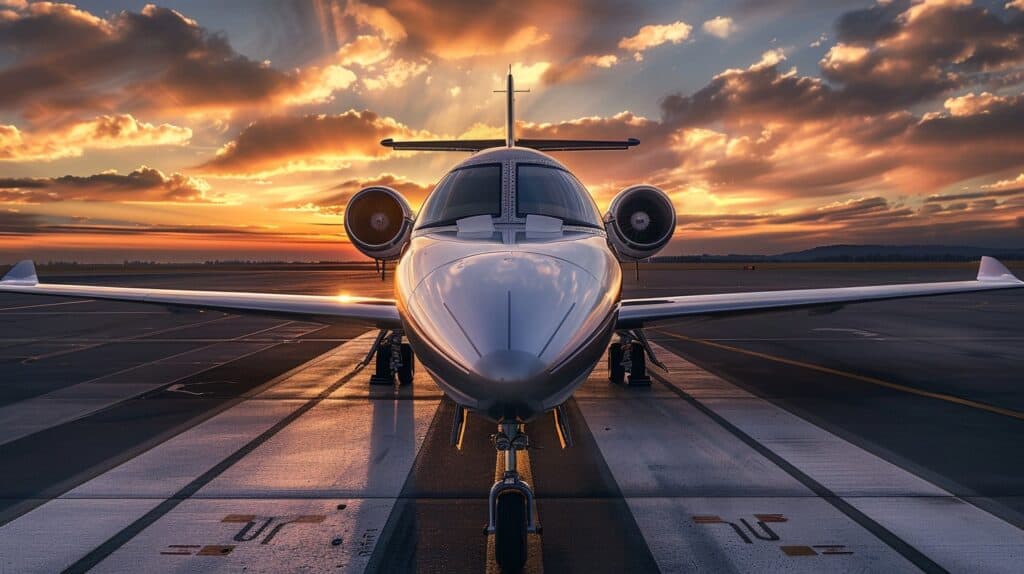
Saving money is key for private jet users. Jet card memberships, leasing, and empty-leg flights offer smart ways to cut costs.
Benefits of Jet Card Memberships
Jet card memberships offer a cost-effective alternative to owning or chartering private jets. Fixed-rate jet cards lock in prices, avoiding the surprises of dynamic pricing. This means you pay one price per flight hour, making budgeting for travel easy and predictable.
Jet card members enjoy benefits like guaranteed availability. You can book flights with short notice, often just hours before departure. Jet cards often come with perks such as access to exclusive airports and luxury lounges, adding comfort and convenience to your travel experience.
Fixed-rate jet cards turn unpredictable costs into manageable expenses, offering frequent flyers predictability and exclusive benefits.
Leasing a Private Jet
Leasing a private jet offers freedom without the hassle of full ownership. You choose between a wet lease, where you get the aircraft with crew and maintenance included, or a dry lease, where you only rent the plane itself.
Rates vary based on jet size and lease terms. This flexibility makes it perfect for those not ready to commit to buying.
This option cuts down on upfront costs like purchase prices and long-term fees such as hangar storage and upkeep. Leasing also lets you change jets if your needs evolve, providing access to various models from Cessna Citations to Gulfstreams.
And when leasing ends, simply hand back the keys—no worry about selling an aging jet. Next up: considering empty-leg flights for more savings.
Opting for Empty-Leg Flights
After exploring leasing options, turning to empty-leg flights emerges as a savvy move. These are the trips planes make back to base or on to their next destination without passengers, often available at significantly reduced rates.
Airlines and private jet companies list these deals daily, like Volato’s discounts for those quick to book. It cuts charter costs sharply, making luxury air travel more accessible.
I once snagged an empty-leg flight for a fraction of the usual price; it felt like hitting the jackpot in travel convenience and savings. Operators push these offers through various platforms—emails, apps, and websites—giving travelers real-time alerts on available routes.
By keeping an eye out and being flexible with departure dates and times, you can enjoy private jet experiences without denting your bank account too much.
Variables Affecting Private Jet Expenses
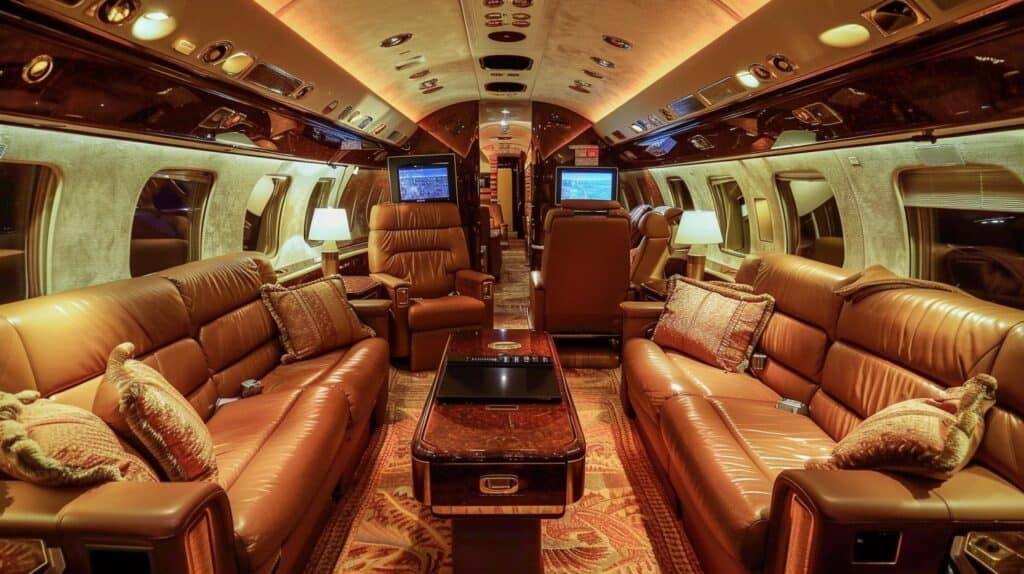
The size and type of your plane play big roles in how much you spend. How often you fly and how far also change costs a lot.
Impact of Aircraft Type and Size
Owning a private jet comes with a cost that varies widely with the type and size of the aircraft. Let’s look at how these factors dramatically change ownership costs.
| Aircraft Type | Size Category | Initial Purchase Price | Annual Running Costs |
|---|---|---|---|
| Very Light Jets | Small | $2-3 million | $500,000 – $1 million |
| Midsize Jets | Medium | $20-35 million | $1-2 million |
| Large Jets | Large | $50-70 million | Over $3 million |
As the table shows, very light jets cost less, both in initial purchase and in annual running costs. This makes them an attractive option for individuals or small companies. Midsize jets, with more space and amenities, see a significant jump in both purchase and operational expenses. Large jets, offering the ultimate in luxury and range, come with the highest costs.
Charter prices reflect these differences too. Renting a small jet for a short trip costs significantly less than chartering a large jet equipped with bedrooms and conference facilities. Hence, jet size and amenities not only influence purchase and maintenance costs but also the cost to charter.
In my experience, opting for a smaller, less complex jet makes sense for those who fly shorter distances or with fewer passengers. This choice can lead to savings in millions over time, not just in purchase price but in fuel, maintenance, and crew salaries.
Understanding these costs helps prospective owners make informed decisions. Selecting the right size and type of jet can align financial investment with travel needs, ensuring both cost efficiency and satisfaction in private flying.
Influence of Flight Frequency
Flight frequency plays a critical role in the cost of owning a private jet. The more you fly, the more you pay, not just in fuel but in maintenance, crew salaries, and landing fees. Each takeoff and landing puts wear on the aircraft, adding to upkeep costs. Frequent flights also mean more frequent mandatory safety checks and potential parts replacements. Let’s break this down with numbers and specifics.
| Factor | Impact on Costs |
|---|---|
| Fuel | The more often you fly, the more fuel you’ll need. This cost varies with oil prices and distance flown. |
| Maintenance | Regular flights increase wear and tear, leading to more frequent and costly maintenance checks and repairs. |
| Crew | Salaries for pilots and crew become higher with more flights, especially if overnight stays are required. |
| Landing Fees | Each landing incurs fees. More landings mean higher costs, influenced by the airport and time of day. |
Flight hours directly influence these costs, emphasizing the need for potential owners to consider how often they plan to use their jet. Brokers specializing in used private aircrafts offer filtering options by model, manufacturer, and, crucially, flight time, helping buyers predict maintenance and operation expenses better.
Exploring how travel distance affects private jet expenses follows naturally from understanding the influence of flight frequency.
Effects of Travel Distance
Moving from the influence of flight frequency, it’s vital to understand how travel distance plays a fundamental role in private jet expenses. Longer trips demand more fuel, increase operational hours for the crew, and may necessitate additional logistical arrangements. These factors contribute to varying costs directly tied to the distance of your flight.
| Travel Distance | Direct Costs | Indirect Costs |
|---|---|---|
| Short-range flights | Lower fuel consumption | Minimal crew hours, reduced need for overnight stays |
| Mid-range flights | Moderate fuel needs | Increase in crew hours, possible layovers |
| Long-range flights | High fuel usage | Extended crew operational hours, complex logistics |
Short-range trips, such as city hops, usually incur the least costs, making them more economical for frequent, brief journeys. Mid-range flights elevate expenses modestly due to greater fuel and crew requirements. On the far end, long-range voyages represent a significant hike in costs, attributed to the high consumption of aviation fuel, increased salaries for extended crew hours, and more complex logistical needs.
Traveling longer distances also potentially adds to landing fees at various airports and taxes tied to international flights. These variables ensure that the total cost of owning and operating a private jet scales with the distance of your intended journeys. Always factor these elements to align your budget with your flying habits effectively.
Financing Options for Private Jets
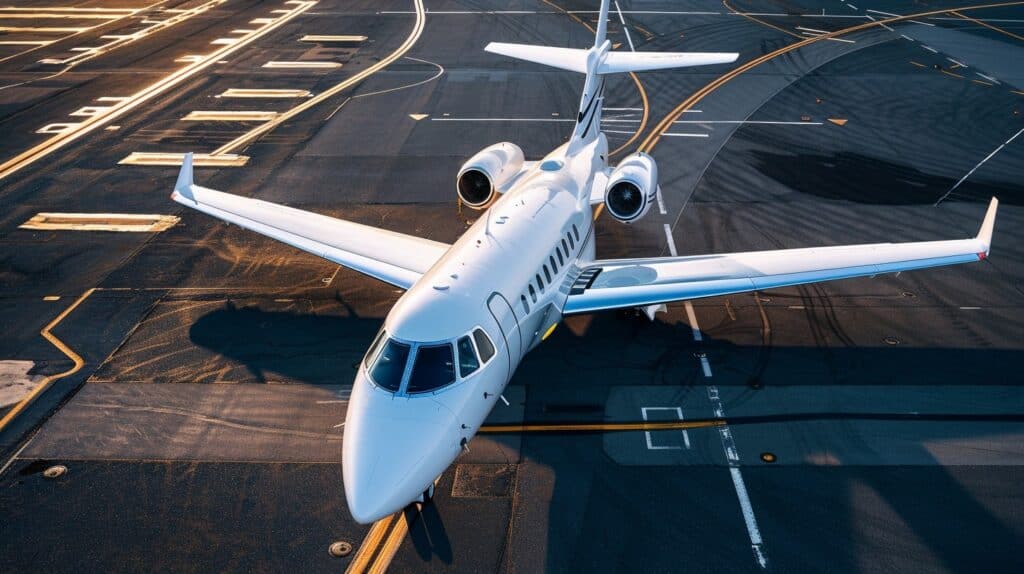
Buying a private jet? Consider loans, leasing, or even credit lines. Banks like Citi and Bank of America offer ways to fund your dream plane. Some prefer leasing for less hassle. Ready to fly high without breaking the bank? Look into these options!
Securing Personal Loans for Jets
Securing a loan for a jet is straightforward with banks, secured personal loans, and niche lenders. Firms like JetLoan Capital and JetLease Capital offer specific financing options.
They understand the market and tailor loan packages to meet buyer needs. Unlike typical lending for cars or homes, banks such as Bank of America and Capital One, have teams dedicated to aviation finance.
These teams assess credit scores, financial history, and the jet’s value before approving loans.
To buy your dream jet, explore options from specialized financiers like Global Jet Capital.
Options include leasing arrangements where you pay over time. This choice often suits those not ready to purchase outright but desiring the benefits of private flight. Whether choosing a lump sum payment or monthly installments through leasing – securing funding aligns with owning a private piece of the sky without financial strain.
Details on Leasing Arrangements
Leasing a private jet can come in two main types: wet leases and dry leases. Wet leases include crew costs, so you don’t worry about hiring pilots or staff. Dry leases do not come with a crew, giving you the freedom to choose your team.
Companies like NetJets and Nicholas Air offer over 60 private jet card memberships with various pricing structures—dynamic, fixed, and capped—to fit different needs.
Choosing between wet and dry leasing depends on how much control you want over your flights. Wet leasing is simpler; everything is handled for you, perfect if convenience is key. For those wanting more flexibility or possibly lower costs by employing their crew, dry leasing might be the better choice.
Each option offers a unique way to manage expenses without buying a jet outright—a smart move for savvy travelers who value efficiency and financial wisdom.
People Also Ask
What’s the starting price for owning a private jet?
Owning a private jet, like a Cessna Citation M2 or Gulfstream 450, starts at millions of dollars. Costs include purchase price, fuel surcharges, and maintenance.
Can I save money with fractional ownership?
Yes! Fractional-ownership lets you share costs with others. It’s like having a timeshare in the sky—less cost, still luxurious.
How do leasing arrangements work for jets?
Leasing a jet means paying to use it without owning it outright. You avoid depreciation but pay monthly rates and operational costs.
Are there extra costs to consider?
Absolutely! Think fuel-efficient models to cut on gas bills; yet always budget for crew salaries, hangar fees, insurance, and unexpected repairs.
How can I manage expenses smartly?
Use strategies like refinancing high-interest loans or choosing aircraft with tax benefits and bonus depreciation options. Consult financial advisors for tailored advice.
What clever savings tips exist for frequent flyers?
Consider perks from banking products—like credit cards offering cashback on purchases or points towards travel expenses—and investing in mutual funds or ETFs that grow your wealth over time.
